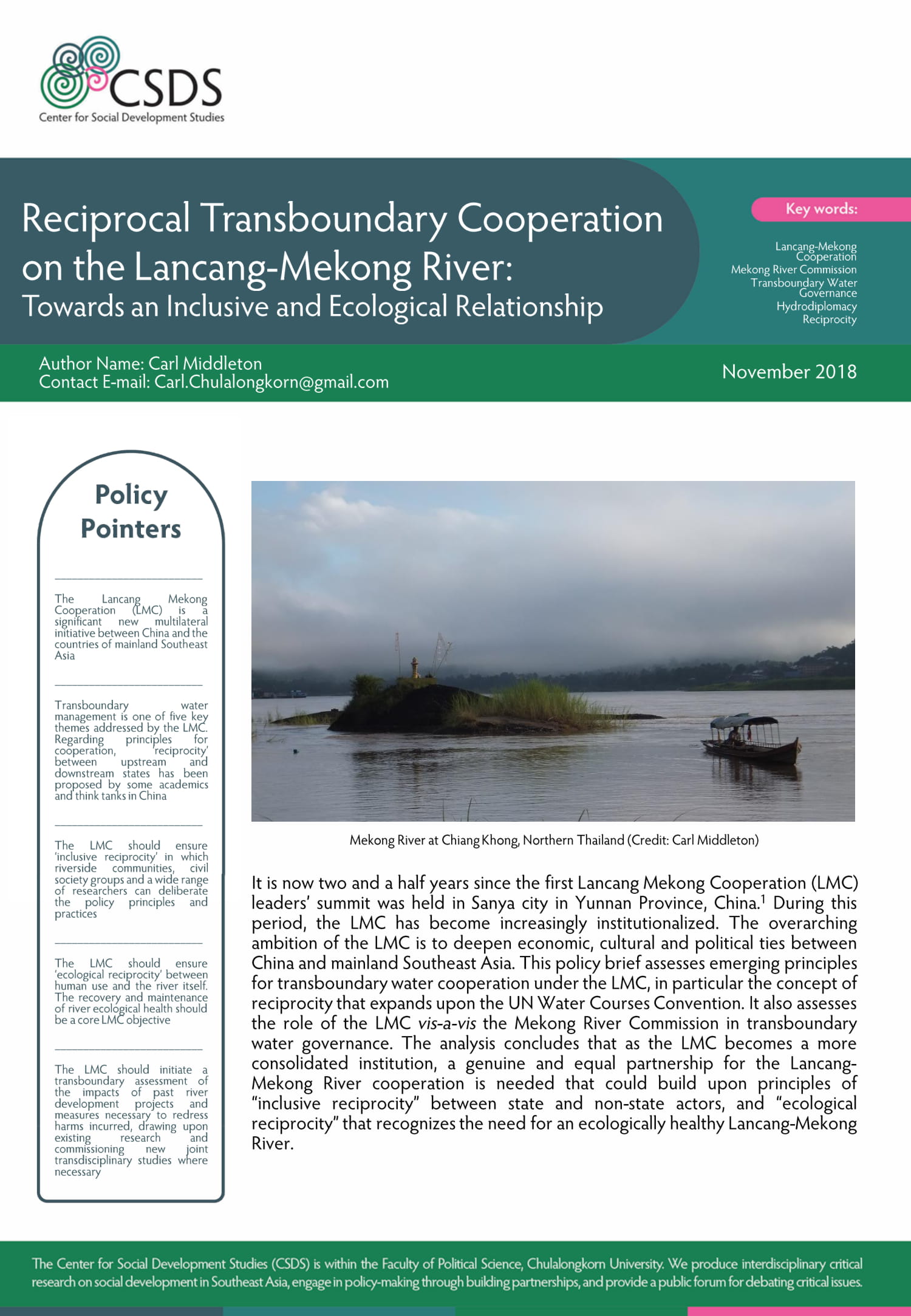JOURNAL ARTICLE: Ontological Politics of Hydrosocial Territories in the Salween River Basin, Myanmar/Burma
/Publication date: April 2020
Publication: Political Geography, Volume 78
Authors: Johanna M. Götz, Carl Middleton
Abstract:
In this paper, we question an often-unchallenged assumption that we all talk about the same ‘thing’ when talking about water. Taking the Salween River in Myanmar as a case study, we draw on a growing body of hydrosocial literature to analyze the multiple ontologies of water. Conceptually, we take each ontology to be constituted of – and enacted within – a human-more-than-human assemblage, the spatiotemporal dimensions of which demarcate a ‘hydrosocial territory.’ We present three illustrations, namely: the role of the Union Government's National Water Resources Committee and how it manifests and is situated within an ontology of ‘modern Water’; a Karen indigenous initiative to establish a Salween Peace Park and an associated revealing of an ‘indigenous’ ontology; and plans for the construction of mainstream hydropower dams and electricity export to neighboring Thailand, where different water ontologies and their hydrosocial territories collide. We examine how multiple ontologies of water are contested through ‘ontological politics’, whereby human actors compete to further their own interests by naturalizing their ontology while marginalizing others. While not downplaying the role violent conflict plays, we argue that in the Salween basin ontological politics are an underappreciated terrain of contestation through which political authority and the power relations that underpin it are (re)produced, with implications for processes of state formation, territorialization and the ongoing peace negotiations.
Key Words: Salween/Thanlwin River, Resource politics, Multiple ontologies of water, Partially-connected worlds
Read the article here.
Citation: Götz, J. M., & Middleton, C. (2020). Ontological politics of hydrosocial territories in the Salween River basin, Myanmar/Burma. Political Geography, 78, 102115. https://doi.org/10.1016/j.polgeo.2019.102115





